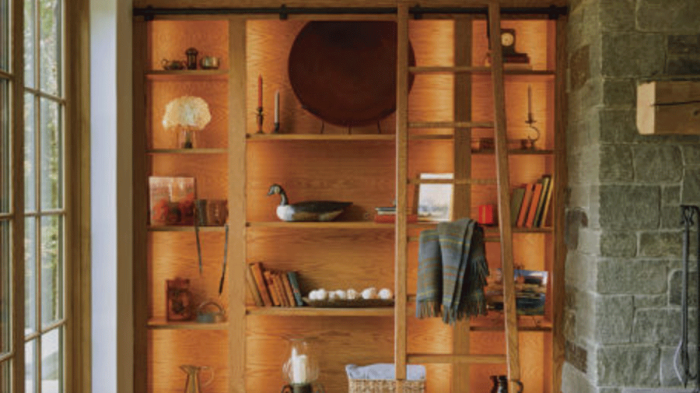LEDs Offer Flexibility for Home Lighting Design
Strip tape is revolutionizing the way designers light countertops, built-ins, and architectural details.

Synopsis: LED strip tape is revolutionizing residential lighting design. This article by lighting designer David Warfel begins with a detailed look at the anatomy of an LED strip and an overview of the wiring structure. It then shifts to discuss strategies for lighting countertops, cabinets, bathrooms, and crown molding and other features. Finally, it includes advice on choosing the right lights and outlines five common LED-lighting mistakes and expert solutions.
As a lighting professional, I have come to think of good lighting as a means to many ends. Not only does it help us see what we are doing so we can perform tasks comfortably and safely, but it also allows us to navigate a space by illuminating where we are and where we are going. Light sets a mood, makes us feel alert in the morning, and can help us relax in the evening. It assists in times of transition—whether it’s the turning of the seasons or the aging of our eyes. Studies have shown that light can even aid in the healing process. By focusing light on things that are important to us, such as fine craftsmanship, high-quality materials, or a crayon drawing by a favorite niece, it is also a wonderful medium for expressing our personal style. So how can you harness all this potential and differentiate your projects from others? The answer is to focus first on what great lighting can do for a home, not on where to put the 6-in. cans. Then understand what you want the light to do; its function will help determine where to put it—under, inside, above, or in some combination. Finally, tap into the limitless possibilities inherent in LED strip tape.

From Fine Homebuilding #280
More on FineHomebuilding.com about lighting:







View Comments
It is harder than the author admits to find good color rendition. Good color rendition can trump brightness - you need more lumens to "see". This really comes out when reading. Using LEDs for reading will seem okay at first, but will really tire your eyes. Try an experiment. Use an old-fashioned incandescent flashlight and an LED one. Try for comparable power, but size and amounts of the same batteries will do. On a dark night, point each, one at a time, at one of those diamond-shaped highway signs, from a goodly distance. One (the incandescent) will light up the reflective tape/paint as if was a light-source. One won't. (I did that with Maglights of the same size, and other types.) A small incandescent will illuminate that sign from what seems like ridiculous distance. A yellow lab will show up startlingly in the incandescent, the LED will leave her nearly invisible. What works outside, works inside. The multiple spectrums of an incandescent catches/causes a reflection, illuminates more colors, when you are moving around a darkened house, and you see the hazard. We don't seem to have a standard. Some LEDs are better than others. Whether is is "cool" or "warm" or "soft-white" or whatever, what is important is the strengths and weaknesses of the light source. Our eyes were designed for the multiple spectrums of the sun. If you mix LED of all three primary colors, it can simulate true color, but you are still missing thousands of individual spectrums. It's hard to look at a package and tell what it is really going to look like and how it will perform under longer than 1 minute of test.
You clearly spend more time thinking about light than most and are beginning to unwrap the complexities. Light is more complex even still: lumens, delivered lumens, color rendering index (CRI), CCT (correlated color temperature), L70 ratings and life, color shifting and tuning, ambient light, uniformity ratios, and beam spreads and distribution are just a few of the details we are now expected to learn when approaching lighting design.
I agree that mixing red, green, and blue (or RGB) LEDs is a disaster when you are trying to mix to white light. Fortunately, most LEDs these days are white, not a mix of primaries. Far more of the visible spectrum is included in “high CRI” LED sources and the best will be virtually indistinguishable from incandescent. In fact, some LED lamps can even provide superior color rendition that incandescent. You won’t find those at the neighborhood home center yet, unfortunately.
I have a weakness for flashlight competitions! The reflecting distance has very little to do with whether it is an LED or incandescent source and everything to do with what we call the photometrics of the flashlight. Photometrics will include everything from lumens to fixture efficiency and distribution, each of which is key. That is why what works illuminating a stop sign may be the wrong thing for illuminating a counter top. There are some truly phenomenal LED sources on the market now that far outperform incandescent (and, in the case of flashlights, can last months or years longer). I won’t light a counter with incandescent anymore--the high-quality LEDs do a better job. But the bulbs in my dining room chandelier? Still incandescent! --David K. Warfel